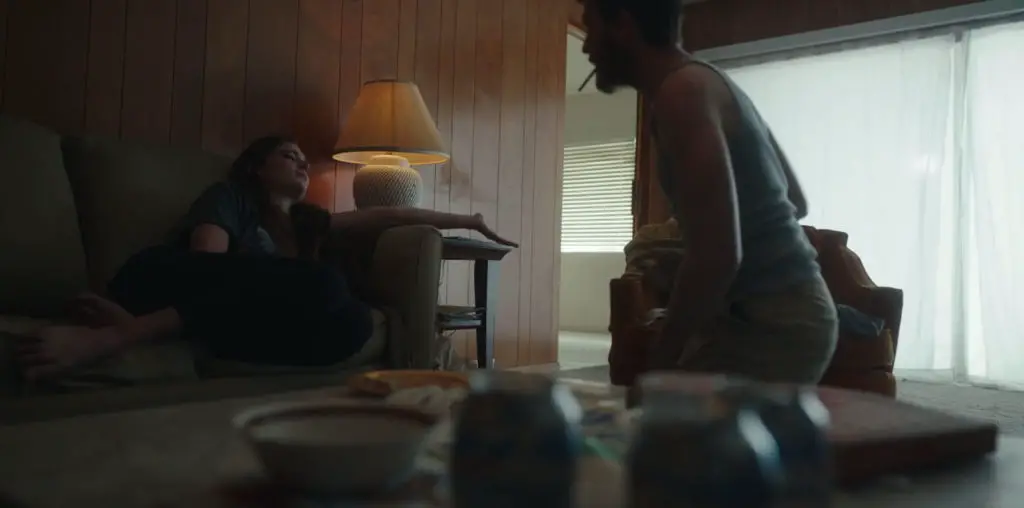
BOOTLEG FILES 194: “Let There Be Light” (John Huston’s long-censored 1946 documentary on mental health therapy for shell-shocked World War II veterans).
LAST SEEN: Available for viewing on several Net sites.
AMERICAN HOME VIDEO: Only on public domain dupes.
REASON FOR DISAPPEARANCE: Suppressed by the U.S. Army for 35 years, then released to an underwhelming response.
CHANCES OF SEEING A DVD RELEASE: As an orphaned film, there is no interest in coordinating a much-needed restoration.
Mental health therapy and treatment continues to hold a nasty stigma, even in today’s allegedly sophisticated world. This is particularly acute within the American military, where many veterans returning from the occupation of Iraq are intentionally avoiding such therapy and treatment because they don’t want to be categorized as “crazy.”
Back in the 1940s, the stigma surrounding mental health was even more pronounced. Many people saw it as a sign of weakness, not a medical affliction, and only the most conspicuously severe cases received hospital-based care. For veterans returning from World War II, mental health played havoc with the concept of a “wounded warrior” – there was no embarrassment in having a physical disability from the battlefield, but a mental health problem was seen by many as a scar of shame.
The U.S. Army, in a rare display of humanity, attempted to wipe away the taboo regarding mental health issues by having John Huston create a documentary on the treatment of hospitalized veterans with psychologically-related trauma. Huston helmed a one-hour production that was supposed to be called “The Returning Psychoneurotics” – it was renamed under the more inspiring title “Let There Be Light.”
However, when the film was completed in 1946, the Army took an abrupt about-face and refused to allow public screenings. A scheduled premiere at New York’s Museum of Modern Art was cancelled at the last minute, under the argument by the Army that the film invaded the privacy of the soldiers in the film. Huston did not have signed consent forms from the participants in the film and the Army would not assist him in tracking down the soldiers for their permission to appear in the movie.
For 35 years, “Let There Be Light” was censored, making it the first and only U.S. government-produced documentary to be forbidden from exhibition. It wasn’t until 1980, when a successful push made by MPAA honcho Jack Valenti and producer Ray Stark, convinced the Carter White House to force the Army to allow the film’s release. In January 1981, it had its theatrical premiere at New York’s legendary art house, the Thalia.
In retrospect, it is both easy and difficult to understand why the Army was so angry with the film. “Let There Be Light,” unlike other propaganda films produced by the government during World War II, dared to show the fragility and emotional anguish of America’s troops. The Army, clearly obsessed with its PR notion of invincible fighting forces, saw the mental health problems of its emotionally wounded men as the proverbial weak link in the military chain of command. No one wants to admit weakness, especially in a military environment, and the Army had no problems locking the film away for more than three decades.
However, it is also hard to understand the concern since “Let There Be Light” is not a good film. In fact, the film (when viewed today) is a patently phony and borderline ridiculous examination of mental health conditions. Much of the film is blatantly staged for the cameras, which negates its value as a documentary. Indeed, if the underlying subject wasn’t so serious, the film could be dismissed as an unintentional dark comedy.
“Let There Be Light” was shot at Mason General Hospital on Long Island, and this New York location may explain the unusually progressive interracial mix of patient-soldiers (this was made during a time when the Army was still racially segregated). In fact, this is one of the very few government-produced films that puts blacks and whites together on equal footing (one of the patients featured in the film is black).
Huston tapped cinematographer Stanley Cortez to shoot the film, but Cortez was apparently still in the mindframe of his work on “The Magnificent Ambersons” – the documentary has a wealth of tilted angle shots and chiaroscuro lighting effects that seem weirdly out of place for this type of movie. Dimitri Tiomkin’s busy musical score and Walter Huston’s hammy narration don’t help much, either.
Huston seriously pulls his punches by focusing on patients who (in the realm of mental health) have relatively lower grade afflictions: a psychosomatic paralysis case, a soldier who came down with advanced stuttering following his battle tour, a soldier with amnesia, and another soldier with what appears to be run-of-the-mill depression. In these cases, the hospital’s medical staff has quick and easy cures: either hypnosis or a shot of a sodium amytal. Faster than you can say “Hirohito,” the once-afflicted soldiers are right as rain and eager to get back to the world.
If “Let There Be Light” is to be believed, treating mental health problems is as simple as treating a bee sting: a couple of minutes with the trusty ol’ doc and all of the woes are over. Huston clearly did not have permission to document the more serious cases of war-induced suffering, and reportedly footage that he was able to shoot of electric shock treatment was jettisoned from the final cut.
At no time in “Let There Be Light” does one get the feeling that we are watching genuine events unfold. It all seems terribly fake – the patients’ daily routines, the medical examinations, the treatments and instant cures, and the reunions with sweethearts who can’t wait for their G.I.’s to get home. The film also assumes that all treatments are 100% final and there are no relapses or need for additional therapy after the soldiers receive their medical discharges.
In the genre of government-sponsored documentaries, this fakery is hardly uncommon. Indeed, much of the wartime propaganda that was shot in the midst of battle involved recreations and staged events (the most iconic being the Iwo Jima flag raising). But for a film of this subject matter, the fakery seems fairly distasteful and sleazy. The film’s claims of veterans receiving proper medical treatment seems dubious when one understands the history of the production.
However, for 1946, this was pretty daring stuff. James Agee, the influential film critic for The Nation, saw “Let There Be Light” before it was censored and he was livid at the Army’s actions. “I don’t know what is necessary to reverse this disgraceful decision,” he wrote about the censorship. “But if dynamite is required, then dynamite is indicated.”
However, by the time “Let There Be Light” was finally shown in 1981, most people who saw it were confused about the brouhaha. Vincent Canby of the New York Times dismissed it as a “good, slickly made documentary,” adding “at this late date, it’s difficult to see what the fuss is about.”
Richard Corliss of Time Magazine was even more caustic in relaying the film’s melodramatics: “Biblical overtones reverberate through the film: in the godlike authority the men be stow on their medical-officer saviors (and on the omniscient movie camera); in the miraculous cures, some of which are accomplished in a few minutes; in the impassioned litanies of the healed patients (“I can talk! I can talk! I can talk! Oh, God, listen, I can talk!”).”
The Army, obviously fuming over having its 35-year decision reversed, made no effort to restore “Let There Be Light” for its 1981 release (an archival print was used). Since the film had no copyright (none of the government-produced wartime films had that protection), it was immediately available for public domain duping. Today, “Let There Be Light” exists in cruddy copies that look like third-generation dupes. Anyone who loves the pristine visual quality of John Huston’s canon will be disappointed at the lousy copies in release today.
Except for Huston’s addicts and those interested in the history of mental health treatments, there is very little reason to seek out “Let There Be Light.” Had the film not been banned by the Army, it probably would’ve been forgotten almost immediately.
IMPORTANT NOTICE: The unauthorized duplication and distribution of copyright-protected material is not widely appreciated by the entertainment industry, and on occasion law enforcement personnel help boost their arrest quotas by collaring cheery cinephiles engaged in such activities. So if you are going to copy and sell bootleg videos, a word to the wise: don’t get caught. The purchase and ownership of bootleg videos, however, is perfectly legal and we think that’s just peachy! This column was brought to you by Phil Hall, a contributing editor at
Film Threat and the man who knows where to get the good stuff…on video, that is.
Discuss The Bootleg Files in Back Talk>>>

